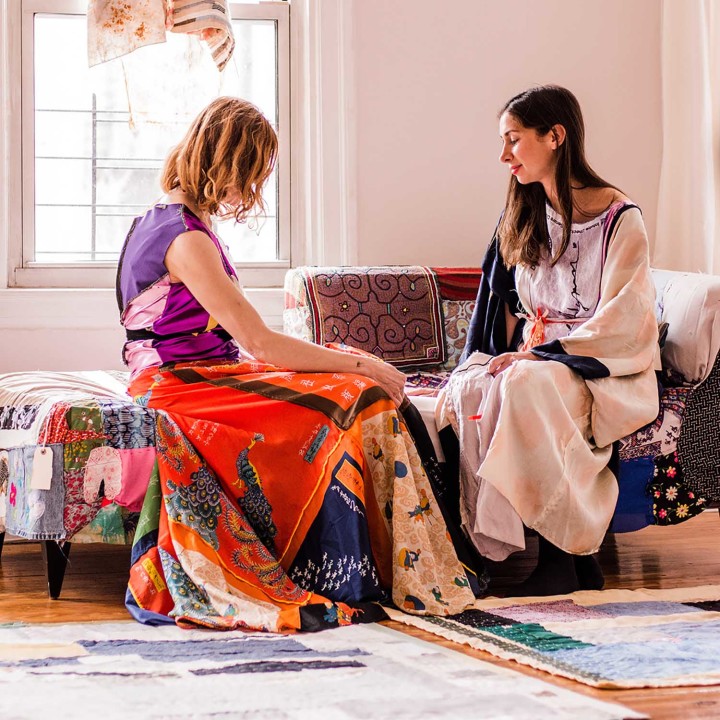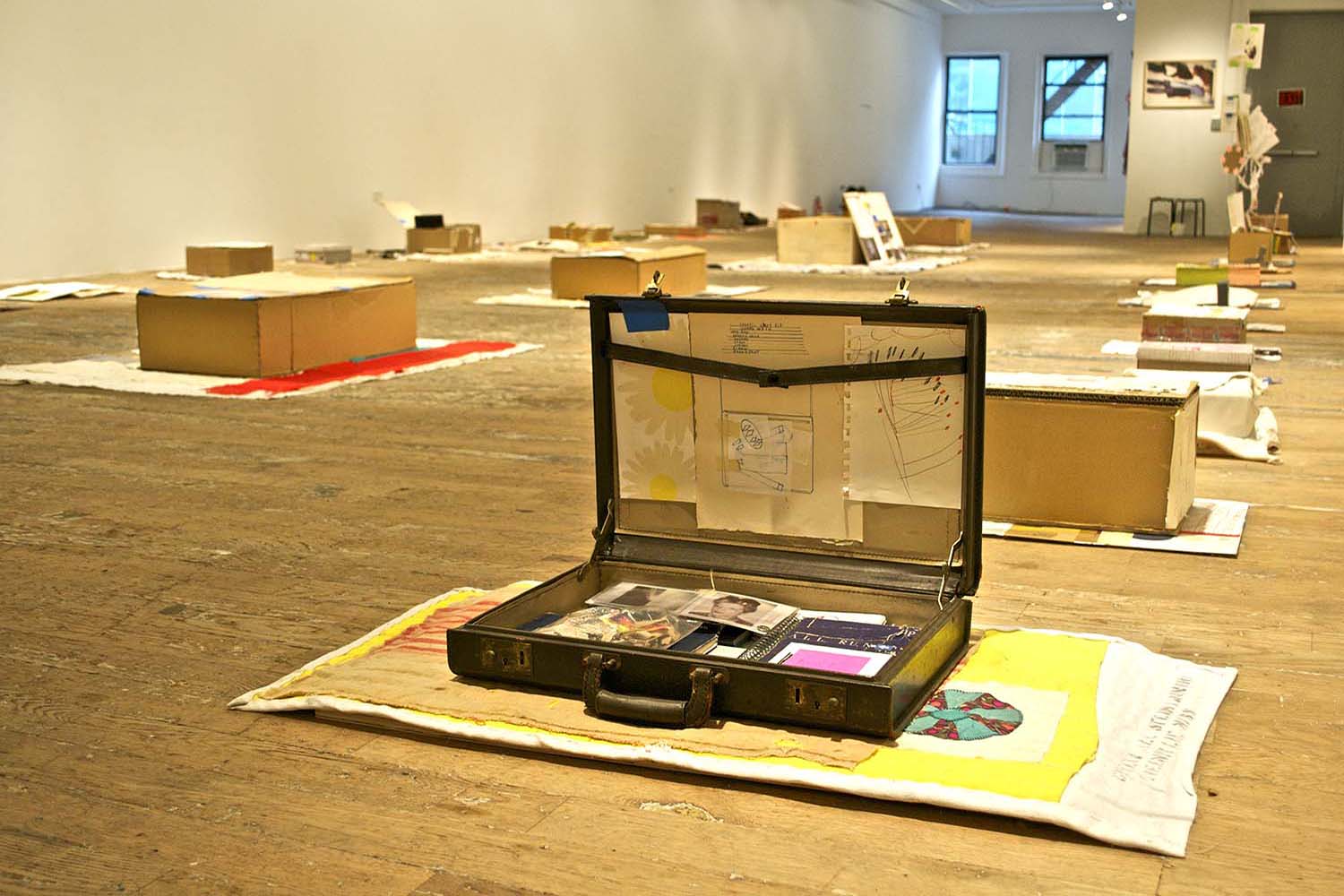Exhibition space and artwork merge in the presentation of the new RUN Home collection at The Community in Paris. Gathering a series of recent and past works by Susan Cianciolo, Kiva Motnyk and their collective of multiple collaborators, the show presents clothing, textiles, works on paper and ceramics in the raw interior of The Community gallery where, in the former barbershop, RUN’s objects and textile works seem at home.
Spread across the ground level of the gallery space, the show has cute moments — like a small children’s playroom off the main space — that invite visitors to socialize with the works. The collection is the latest iteration of Cianciolo and Motnyk’s collaboration, one that regularly explores making, wearing and exhibiting clothes as an interrelated and holistic practice in which boundaries between disciplines become intimate and blurred.
Often described as a visual artist, designer and even restaurateur, New York–based Cianciolo emerged from a 1990s art/fashion generation in New York, managing to survive the status of independent designer through her diverse output of collaborations, exhibitions and immersive events. Motnyk, a textile designer and the founder of Thompson Street Studio, has created work that similarly explores experimental practice in the fiber arts. For their RUN collections, the artists work with a crew of collaborators, each involved to some extent on pieces in the collection. Designers Jessica Ogden and Zoe Latta, as well as Mississippi-based quilter Coulter Fussell, are just a few of the contributors to RUN’s ongoing methodology of sharing and repurposing. The handmade quilts, repurposed textiles, illustrations and garments displayed invite the status of incomplete.
Tuukka Laurila, cofounder and director of The Community, explains: “What is interesting to us is how Susan and Kiva combine their backgrounds in fashion with their art practice. As curators, we really connect with this aspect of their work: you can’t categorize it, and it makes people confused.” This indefinability adds to the charm of Susan and Kiva’s work, which avoids the political to find smaller reflective experiences keyed to the history of textile art and crafts.


